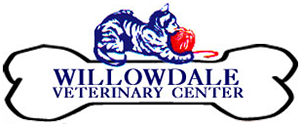Library
-
By-products are ingredients commonly found in commercial pet foods and are considered highly desirable by many human cultures. However, there is ambiguity surrounding this term and misperceptions related to overall nutritional value. This article reviews the formal definition of by-products in the pet food industry and highlights the nutritional and environmental benefits they provide.
-
Corn and grain have been included in commercial pet foods for many years. Recently, however, these ingredients have been portrayed in the media as "fillers" that provide little nutritional value to pet foods. Conversely, corn and grain provide a wide range of essential nutrients that support the health of both dogs and cats. This article explores this topic with reference to specific nutritional benefits.
-
Pandora syndrome affects multiple organ systems, including the urinary tract. The term is often used synonymously with Feline Idiopathic Cystitis (FIC), but FIC is only one component of Pandora syndrome. It is believed to be related to chronic stress. This article discusses causes, signs, diagnosis, treatment, and prognosis for cats with this condition.
-
The "ancestral diet" for dogs and cats is a broad term for a feeding plan that generally mimics what a wolf or wild cat might consume in the wilderness. In practice, there is great variability in nutrients, ingredients, and safety considerations for food sold or produced as an ancestral diet. This article reviews these considerations, so that pet owners, along with their veterinary care teams, can make informed decisions for their pets.
-
Nutrition plays an essential role in treating and preventing urinary stones (uroliths). Since the diet can affect urine dilution, composition and pH, pet foods can be critical to the success or failure of treatment and prevention. Important factors are covered, such as the importance of water intake, diet composition, relative supersaturation (RSS) testing, and urinary diets.
-
Helping your pet lose weight may be challenging at first, but with a little patience and persistence, you can be successful. Research has shown that small amounts of weight loss help improve the quality of life for overweight pets: they feel better, move easier, play more often, and live healthier lives. This handout focuses on commonly asked questions and tips for owners to help their overweight pet successfully achieve some weight loss.
-
Treats are a wonderful way to provide positive reinforcement to your cat during a training session. Choose low-calorie foods such as green beans, zucchini squash, and watermelon. Avoid foods that are potentially harmful, such as chocolate, garlic, onions, raisins, grapes, macadamia nuts, and products that have xylitol. Limit high-calorie treats and keep treats within 10% of your cat's daily calorie intake. Keeping training sessions short and engaging while providing appropriate foods as treats can be a wonderful way to strengthen the human-animal bond.
-
Weight-loss programs are not easy, especially when an overweight animal cannot exercise. Veterinary therapeutic diets, automatic feeders, food puzzles, and animal rehabilitation therapy are tools that should be considered for every pet's weight loss program. Pet parents who are motivated to help their overweight dog or cat lose weight should work closely with their veterinary healthcare team to address concerns and discuss ideas for the pet's home environment. The most successful pet owners recruit family and/or friends to support their plans. Patience and persistence are often needed because weight loss doesn't happen quickly.
-
Palatability refers to how good a pet food or treat tastes, and it is based on the preferences of a dog or cat. Palatability is a combination of how a product smells, tastes, and feels. Pet food companies spend a lot of time and money studying how to improve the palatability of their products. This article addresses several commonly asked questions about the "how", "what", and "why" of making pet foods as tasty as they can be.
